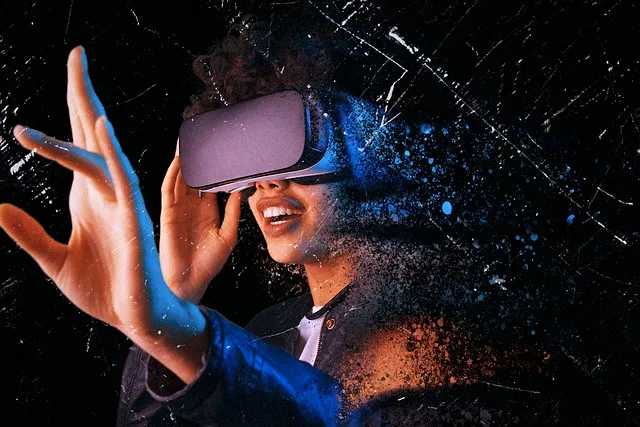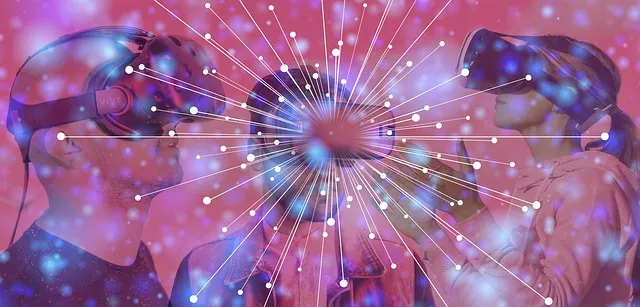What is Augmented Reality – A Complete Guide
Recently, the term Augmented Reality has become increasingly popular in some circles. Because Augmented Reality (AR) is predicted to be an important technology in the future of humans. But do you already know about what is Augmented Reality (AR)?
Augmented Reality technology is rapidly entering a new phase that allows you to have a context-rich user experience. The context in question is a context that combines sensors, computing, Internet of Things, and Artificial Intelligence.
AR technology will bring significant transformation to many areas of the economy in terms of productivity, competitiveness, as well as providing new and innovative services to clients. So many people are competing to develop AR-based technology.
Table of Contents
- What Is Augmented Reality (AR)?
- Types of Augmented Reality (AR)
- How Augmented Reality Works
- Examples of Application of Augmented Reality in Various Fields
- Conclusion
What Is Augmented Reality (AR)?

Before discussing further about Augmented Reality in detail, you first need to know what Augmented Reality is. The goal is that you can get more complete information and understanding of the technology.
Augmented Reality is a technology that expands our physical world by adding layers of digital information to it. Unlike VR (Virtual Reality), AR does not create an entire artificial environment to replace the real one with the virtual one.
Read: What is the Internet of Things, its Elements and Benefits?
Augmented Reality allows users to see 2D or 3D virtual objects projected against the real world. So in essence Augmented Reality or AR is a technology that is able to insert information into the virtual world and display it to the real world with the help of computer webcams, cameras, and even special glasses.
Types of Augmented Reality (AR)

After knowing about what is Augmented Reality, you also need to know about the types of Augmented Reality. In general, there are several categories of AR technology, each with its own differences and uses.
For your information, here are some types of Augmented Reality (AR) that you need to know:
1. Marker-Based Augmented Reality
One type of Augmented Reality that you need to know is Marker-Based Augmented Reality. Marker-based AR uses a camera and several types of visual markers, such as QR/2D codes. This technology will produce output only when the marker is perceived by the reader.
Marker-based implementations use the camera on the device to distinguish markers from other real-world objects. Simple patterns such as QR codes are used as markers because they can be easily recognized and do not require much effort to read.
Position and orientation are also calculated, where certain types of content or information are then loaded with multiple markers. Some people call it image recognition. Because this marker will display a digital animation that can be seen by the user.
2. Markerless Augmented Reality
The type of Augmented Reality (AR) technology that you need to know next is Markerless Augmented Reality. As one of the most widely implemented AR applications, markerless augmented reality uses the GPS, digital compass, speed meter, or accelerometer built into the device to provide data based on your location.
The markerless augmented reality technology found on your smartphone device has location detection features available. This type is commonly used for mapping directions, and other location-based mobile applications.
3. Projection Based Augmented Reality
Projection based AR works by projecting artificial light onto a real surface. The application of this technology enables human interaction by sending light onto a real surface and then sensing the human interaction (touch) of the projected light.
Read: What is Artificial Intelligence? The Following are Definitions and Examples
User interaction detection is performed by distinguishing between the expected projection and the modified projection. Another interesting application of this technology is the use of laser plasma technology to project three-dimensional (3D) interactive holograms in the air.
4. Superimposition Based Augmented Reality
The next Augmented Reality tip is Superimposition Based Augmented Reality. Superimposition based AR technology is able to replace part or all of the original appearance of an object with a new and augmented view of the same object.
Object detection plays an important role because the application cannot replace the original view with an augmented one if it cannot determine what the object is. A consumer-facing example of augmented reality based on superimposition can be found in the IKEA augmented reality furniture catalog.
How Augmented Reality Works

After knowing about what is Augmented Reality, you also need to know about how the technology works. This is so that you can get a more detailed and complete understanding of the working principles of AR-based technology.
Augmented Reality can be displayed on various devices such as glasses, screens, cellphones, and so on. For the device to function properly, certain amounts of data in the form of videos, images, animations and 3D models need to be used.
Thus one can see the results in both artificial and natural light. AR uses SLAM (Simultaneous Localization and Mapping) technology, sensors, and depth meters. For example, collecting sensor data to calculate the distance from the sensor location to an object.
In order to work optimally, Augmented Reality requires the support of a number of complementary components. For information, here are some AR supporting components that you need to know.
1. Camera and Sensor
One very important component of Augmented Reality (AR) technology is the camera and sensor. The Camera and sensor components are used to collect user collaboration information and send it for processing.
Read: What is RAM on a Computer? Types And Functions
The camera on the gadget has the ability to examine the environment and with that data, will be able to locate physical items and generate 3D models. Then the display will be processed to produce a reality effect that can be felt by the user.
2. Projection
This component refers to a projector that is smaller than the typical AR headset, which picks up information from sensors and projects computerized content onto a surface for viewing.
However, Augmented Reality-based technology is not yet fully designed to be used in commercial goods or services. So that the projection display of the technology can give a real impression on the user experience.
3. Reflection
Some AR gadgets have mirrors to help the human eye see virtual images. Some of them have variations of small mirrors that bend and some have double-sided mirrors to reflect light onto the camera and the user’s eyes.
The purpose of this way of reflection is to play the right image settings. This will then be able to have an impact in the form of a more precise and optimal image display so as to maximize the experience of Augmented Reality technology users.
Examples of Application of Augmented Reality in Various Fields

Although Augmented Reality is a popular technology, AR is still not widely used. Because to bring AR technology requires components and development costs that are quite significant.
Although not many have been found, Augmented Reality can already be used in several sectors. For information, here are some examples of the use of AR in a number of fields.
1. Use of Augmented Reality in Online Games

The rapid development of digital technology has triggered the development of online games. Even now, many developers have launched various types of games to meet the needs of the growing gamers market.
In fact, there are already developers who develop online games based on Augmented Reality technology. One of them is an online game called Pokemon Go! Which some time ago was popular and widely played by fans of online games.
Read: What is OSI Layer: Definition, Functions, and How it Works
This game has its own charm because it has the concept of combining the real world with your favorite Pokemon characters. It feels as if you are in the Pokemon world. So focused on finding Pokemon that they hit a wall or something.
2. Medical Training
Augmented Reality is not only used for entertainment as in online games. But it has also been used in other fields such as Medical Training. Applications of this technology range from using MRI equipment to performing very complex surgeries.
This technology allows them to study the human body without the need to dissect corpses or watch live operations. However, this is not limited to training alone. AR also has applications that can be applied during surgery without the need for traditional invasive cameras and probes.
3. Application of Augmented Reality on Social Media
After knowing about what is Augmented Reality, you should also know the application of this technology. One of the most crucial uses of AR is in the world of social media. One of the AR features that you often use is on Instagram, namely filters.
Almost everyone can already use filters because of the availability of several interesting and entertaining filters of course. These filters are created using AR as a 3D object and also use a touch of AI (Artificial Intelligence) technology as the logic.
4. TV Broadcast
Maybe many of you don’t realize that Augmented Reality has actually been used in television broadcasts. The use of AR technology is commonly found, ranging from broadcasting weather forecasts to sports.
AR can be used in educational documentaries, live sporting events, or other live news reporting to help you understand more esoteric subjects. One example of a film that uses AR is Star Wars.
Conclusion
Although many still feel unfamiliar with Augmented Reality-based technology, AR has undergone significant developments. AR-based technology is increasingly being used in a number of fields for various needs.
In short, Augmented Reality is a technology that expands our physical world by adding layers of digital information to it. In order to work optimally, Augmented Reality requires a number of complementary components.
The complementary components start from the camera and sensor, projection, and also reflection. Along with the rapid development, Augmented Reality is widely used in several sectors. Starting from entertainment facilities, medical, television broadcasts, and so on.
Thus a complete discussion of what is Augmented Reality that you need to know. After reading the article above, I hope you can understand more fully and in detail about Augmented Reality.
